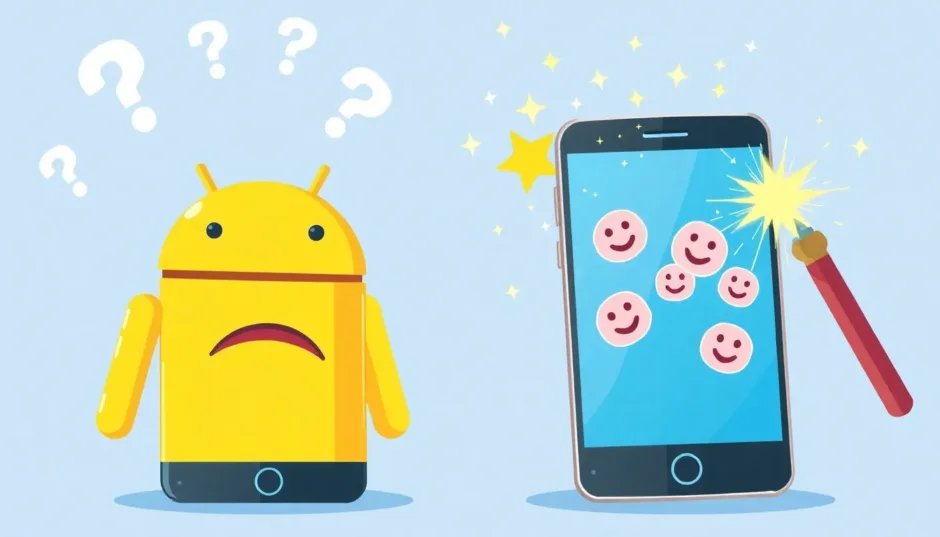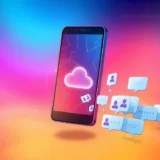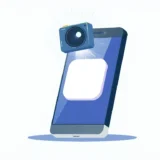Have you ever accidentally deleted important phone numbers from your Android device? That sinking feeling when you realize your contacts are gone is something most of us have experienced. Whether it was an accidental tap, a phone malfunction, or you just can’t remember what happened, losing contact information can be genuinely stressful.
The good news is that in many cases, those deleted contacts aren’t gone forever. Android devices often have built-in safety nets that can help you recover your valuable information. Even if you’ve permanently deleted them, there are still ways to get them back.
This comprehensive guide will walk you through several methods to recover your contacts, starting with the simplest approaches and moving to more advanced solutions when needed. We’ll cover everything from checking if your contacts are just hidden to using specialized recovery software.
Table of Contents
- Understanding Android Contact Recovery
- Preliminary Checks Before Recovery
- Restoring Contacts from Trash or Recycle Bin
- Using Specialized Recovery Software
- Additional Recovery Methods
- Preventing Future Contact Loss
- When Professional Help Might Be Needed
- Common Questions About Contact Recovery
- Conclusion
Understanding Android Contact Recovery
Before we dive into the recovery methods, it’s helpful to understand how contact deletion works on Android devices. When you delete a contact, it doesn’t immediately vanish from your phone’s storage. Instead, the space it occupied is marked as available for new data. This means there’s often a window of opportunity to recover deleted information before it’s overwritten.
Many people wonder, “can you recover deleted contacts android?” The answer is generally yes, especially if you act quickly. The success of recovery depends on several factors, including how long ago the contacts were deleted, what you’ve done with your phone since the deletion, and which recovery method you use.
Some Android manufacturers, particularly Samsung, have implemented additional safety features. The samsung contacts recycle bin is one such feature that temporarily stores deleted contacts before permanent removal. Similarly, the samsung deleted contacts recycle bin function acts as a safeguard against accidental deletions.
Preliminary Checks Before Recovery
Before attempting any recovery method, it’s wise to perform some basic checks. Sometimes contacts aren’t actually deleted but are just not visible due to settings or synchronization issues.
Check Contact Display Settings
Often, what appears to be deleted contacts is actually just a display setting issue. Your phone might be set to show only certain groups of contacts rather than all of them.
To verify this:
Open your Contacts application from your phone’s app drawer or home screen.
Look for the three-dot menu icon (usually in the top-right corner) and tap on it.
Select “Settings” from the dropdown menu that appears.
Navigate to “Contacts to Display” or a similar option, depending on your device.
Change the setting to “All Contacts” to ensure you’re viewing every contact stored on your device.
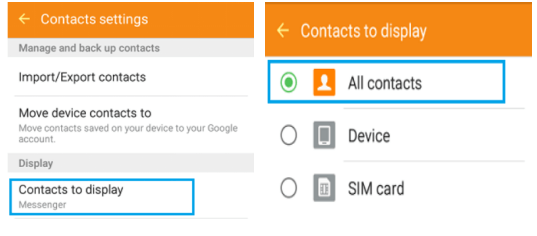
This simple check can sometimes immediately solve what seemed to be a major contact loss issue. If your contacts reappear after this adjustment, you’ve successfully resolved the problem without any complex recovery processes.
Verify Account Synchronization
Another common issue involves contact synchronization with your Google account or other accounts. If contacts are missing, they might not be syncing properly.
Check this by going to Settings > Accounts on your Android device. Select your Google account and ensure that Contact sync is enabled. You can try turning it off and on again to force a fresh synchronization, which might restore any missing contacts.
Restoring Contacts from Trash or Recycle Bin
If your preliminary checks don’t resolve the issue, your next step should be to check if your device has a trash or recycle bin for contacts. This feature isn’t available on all Android devices, but many newer models and specific manufacturers include it.
The process for accessing trash contacts varies by device, but generally follows these steps:
Open your Contacts application.
Tap the menu icon (three dots or lines) typically found in the upper-right corner.
Look for options like “Trash,” “Recycle Bin,” “Recently Deleted,” or similar terminology.
If available, this will show you a list of contacts deleted within a specific timeframe (usually 15-30 days).
Select the contacts you want to recover and choose “Restore” or “Undelete.”
The availability of this feature depends on your device manufacturer, Android version, and the specific contacts app you’re using. Samsung devices often include a samsung contacts recycle bin, while other manufacturers may have similar features under different names.
It’s worth noting that trash contacts are typically only stored for a limited time before being permanently deleted. If you’re trying to recover contacts that were deleted more than a month ago, this method might not work, and you’ll need to explore other options.
Using Specialized Recovery Software
When built-in methods don’t work, or if your contacts were permanently deleted beyond the trash retention period, specialized recovery software can often help. These tools can scan your device’s storage for remnants of deleted data that haven’t been overwritten yet.
One such tool that has proven effective for many users is iMyFone D-Back for Android. This software is designed specifically for Android data recovery and can help in situations where other methods have failed.
iMyFone D-Back for Android.Restore Deleted WhatsApp Messages on Android Without Backup and Root.Supports 6000+ Android Phones and Tablets, including Samsung, Huawei, Xiaomi, OPPO, Google Pixel, and more.Now Supports Android 12/13 for WhatsApp, WA Business, LINE, KakaoTalk, and Samsung Notes Data Recovery.
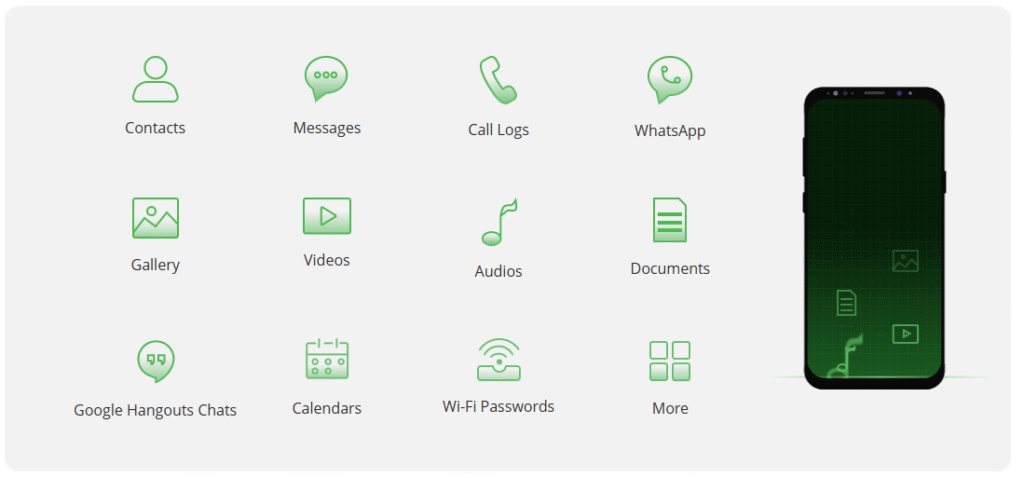
Check More Details | Download Now! | Check All Deals
The recovery process with specialized software typically involves these steps:
Download and install the recovery software on your computer (Windows or Mac, depending on the software).
Connect your Android device to the computer using a USB cable.
Enable USB debugging on your Android device if prompted.
Allow the software to scan your device for recoverable data.
Preview the found contacts and select those you want to recover.
Execute the recovery process to restore contacts to your device or computer.
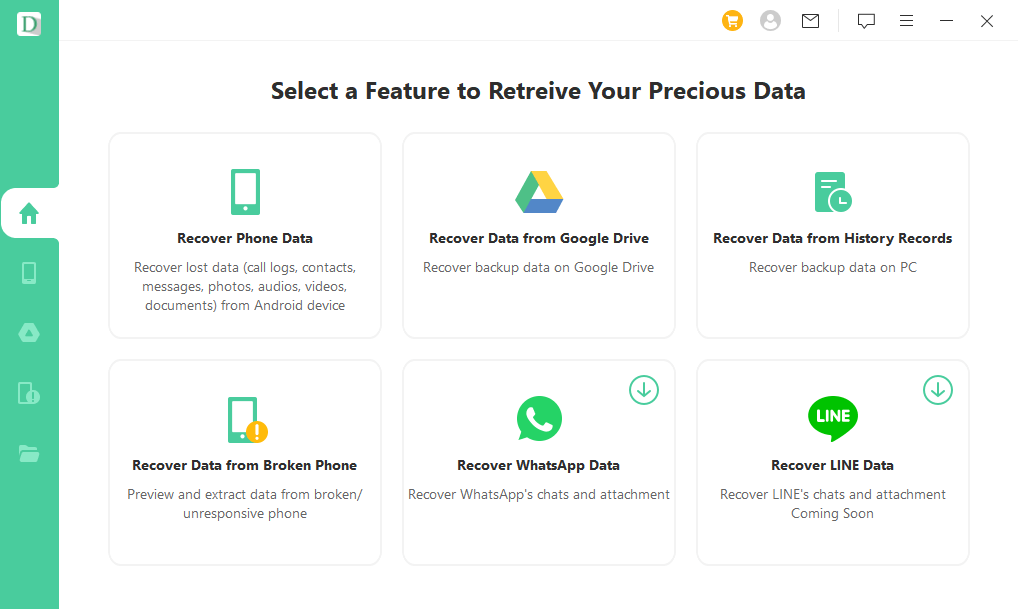
These tools can often recover data even in challenging situations like broken screens, water damage, or software malfunctions. They work by deeply scanning the device’s storage, including areas not normally accessible through regular file managers.
When learning how to recover deleted contacts on an android phone using such software, it’s important to act quickly. The longer you wait after deletion, the higher the chance that new data will overwrite the deleted contacts, making recovery impossible.
Additional Recovery Methods
Beyond the methods already discussed, there are several other approaches you might consider for contact recovery.
Restore from Google Account Backup
If you had contact sync enabled with your Google account, there’s a good chance your contacts are safely backed up in the cloud. Even if they’re deleted from your device, they might still be available in your Google account.
To check this:
Open a web browser and go to contacts.google.com.
Sign in with the same Google account used on your Android device.
Check if your missing contacts are listed there.
If they are, you can restore them to your device by ensuring contact sync is enabled, or by manually exporting and importing them.
Google typically maintains contact history for some time, so even if contacts don’t immediately reappear, you might be able to restore an earlier version of your contact list that includes the missing entries.
Check Other Linked Accounts
If you use multiple accounts on your phone (like work email, additional Google accounts, or social media accounts), your contacts might be associated with one of these rather than your main account.
Check each account’s contact list separately to see if your missing contacts are stored there. Sometimes contacts become “lost” simply because you’re viewing the wrong account’s contact list.
Contact Your Service Provider
In some cases, particularly if you’ve stored contacts on your SIM card, your mobile service provider might be able to help. While they typically don’t maintain records of contacts stored on devices, it’s worth checking if they offer any backup services you might have used.
Preventing Future Contact Loss
Once you’ve recovered your contacts—or even before you lose them—it’s wise to implement practices that will prevent similar situations in the future.
Regular Backups
The most effective way to prevent permanent contact loss is maintaining regular backups. Android offers built-in backup options through Google, but you can also use third-party apps for additional backup security.
Enable automatic Google sync for contacts in your device settings. This ensures your contacts are continuously backed up to the cloud.
Consider exporting your contacts periodically to a file stored on your computer or cloud storage.
Use backup apps that can automatically save your contacts to multiple locations.
Be Cautious with Deletions
Develop habits that reduce the risk of accidental deletions:
Be deliberate when deleting contacts—double-check before confirming deletion.
Use contact groups or favorites rather than deleting less-frequently-used contacts.
Regularly review your contacts to clean up duplicates or outdated information rather than mass deletions.
Understand Your Device’s Features
Familiarize yourself with your specific device’s contact management features. Know if it has a samsung deleted contacts recycle bin or similar safety net, and understand how long deleted items are retained.
Learn how to use your device’s import/export functions for contacts, so you can easily create manual backups when needed.
When Professional Help Might Be Needed
In some situations, particularly with physically damaged devices or complex software issues, professional data recovery services might be your best option. These services have specialized equipment and expertise to recover data from devices that won’t power on or have severe damage.
Consider professional help if:
Your device has physical damage (water exposure, broken components).
You’ve tried multiple recovery methods without success.
The data is extremely valuable and worth the investment in professional recovery.
iMyFone D-Back for Android.Restore Deleted WhatsApp Messages on Android Without Backup and Root.Supports 6000+ Android Phones and Tablets, including Samsung, Huawei, Xiaomi, OPPO, Google Pixel, and more.Now Supports Android 12/13 for WhatsApp, WA Business, LINE, KakaoTalk, and Samsung Notes Data Recovery.

Check More Details | Download Now! | Check All Deals
Common Questions About Contact Recovery
Many people have similar questions when facing contact loss situations. Here are answers to some of the most frequently asked questions.
How long do deleted contacts remain recoverable?
This depends on several factors. Contacts in trash or recycle bins are typically available for 15-30 days. For permanently deleted contacts, the recovery window varies based on how actively you use your device. The more you use your phone after deletion, the higher the chance that new data will overwrite the deleted contacts.
Can I recover contacts from a formatted device?
This is more challenging but sometimes possible with specialized recovery tools. The success rate depends on how much new data has been written to the device since formatting.
Are there free methods for contact recovery?
Yes, several free methods exist, including checking trash folders, restoring from Google backups, and using free versions of recovery software. However, free options may have limitations compared to paid solutions.
Is it safe to use recovery software?
Reputable recovery software from established companies is generally safe to use. Always download such tools from official websites rather than third-party sources, and read reviews before proceeding.
Conclusion
Losing contacts can be frustrating, but as we’ve seen, there are multiple ways to recover them. Start with simple checks to ensure contacts aren’t just hidden or syncing improperly. Then explore built-in recovery options like trash or recycle bins. If these don’t work, specialized recovery software often can retrieve contacts that seem permanently gone.
The key is to act quickly—the sooner you attempt recovery after deletion, the higher your chances of success. Regular backups are your best defense against permanent data loss, so establish good backup habits once you’ve recovered your contacts.
Remember that while this guide covers the most effective recovery methods, results can vary based on your specific device, Android version, and circumstances. If one method doesn’t work, try another—persistence often pays off when it comes to data recovery.
iMyFone D-Back for Android.Restore Deleted WhatsApp Messages on Android Without Backup and Root.Supports 6000+ Android Phones and Tablets, including Samsung, Huawei, Xiaomi, OPPO, Google Pixel, and more.Now Supports Android 12/13 for WhatsApp, WA Business, LINE, KakaoTalk, and Samsung Notes Data Recovery.

Check More Details | Download Now! | Check All Deals
Some images in this article are sourced from iMyFone.
 TOOL HUNTER
TOOL HUNTER